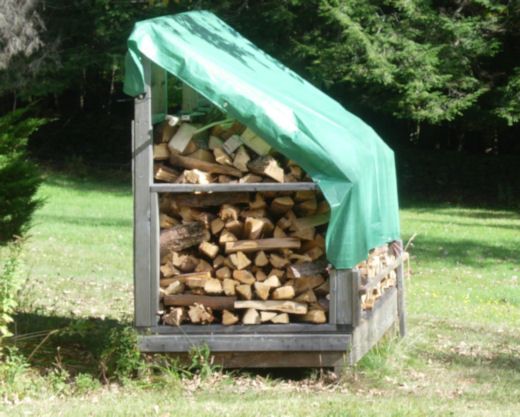I need to give a shout out
@Knots
This. for the most part the sun would extract the moisture from the wood during the day, and then when the glass cooled at night the moisture would condense and it would "rain" inside.
I too have had water drip off the ceiling onto me when visiting commercial greenhouses. That won't do.
The Wife Approval Factor (WAF) on the semicircular roof cross section (like a Quonset hut) was very low.
I can have shipped in special greenhouse plastics in custom cut sizes with a coating on the inside that is supposed to help water droplets flow instead of falling. I might have to upgrade the cheap Home Depot plastic I am using for now in the future, but I needed a different solution. Plus, I figured the commercial greenhouses are using it already and it doesn't work great on semicircular roof cross section. Also, the membrane offerings I see have a bunch of UV blockers in them. I want to let UV through to heat up the wood. I am building a darn greenhouse, not raising orchids.
There are essentially three categories of Gothic arch. The classic standard is as wide as it is tall. There are 'fat' ones, wider than they are tall, often called Tudor style, like this one:
http://www.hoopbenders.net/ . WAF on the fat one was low, but you could cram a lot of wood in there if your wife can live with it. If you are going to use schedule 40 PVC for that you will probably have to heat the hoops (outdoors) and bend them on a jig, but you could use straight pieces for the legs.
Classic or equilateral style Gothic arch cross section, exactly as tall as wide, as thoroughly explicated on wikipedia, got a moderate WAF.
https://en.wikipedia.org/wiki/Gothic_architecture#Equilateral_arch
So I ended up with a skinny Gothic arch cross section, taller than it is wide, and a high WAF. Now I just got to figure out how to use the space efficiently.
Hopefully, with the flattest part of ceiling having a 12:12 pitch I'll get condensation running down the plastic rather than dripping back onto my wood.
![[Hearth.com] Experimental passive solar wood kilns [Hearth.com] Experimental passive solar wood kilns](https://www.hearth.com/talk/data/attachments/171/171100-07c9ec6bd052e9b6cc1295699509d995.jpg?hash=EFc9-j8KFC)
![[Hearth.com] Experimental passive solar wood kilns [Hearth.com] Experimental passive solar wood kilns](https://www.hearth.com/talk/data/attachments/171/171100-07c9ec6bd052e9b6cc1295699509d995.jpg?hash=EFc9-j8KFC)


 . Collecting is a fun hobby even with modest tools; I did splurge on the SS this summer.
. Collecting is a fun hobby even with modest tools; I did splurge on the SS this summer.![[Hearth.com] Experimental passive solar wood kilns [Hearth.com] Experimental passive solar wood kilns](https://www.hearth.com/talk/data/attachments/171/171300-3914e81b2b2a119614f79e07d15c3547.jpg?hash=yIB9-h1aJ2)
![[Hearth.com] Experimental passive solar wood kilns [Hearth.com] Experimental passive solar wood kilns](https://www.hearth.com/talk/data/attachments/171/171301-c8c95b9648886aefa9fd780aa6fbc634.jpg?hash=zt9lE_khVi)
![[Hearth.com] Experimental passive solar wood kilns [Hearth.com] Experimental passive solar wood kilns](https://www.hearth.com/talk/data/attachments/171/171303-d8889a4d8bb161af3eba50dce2b09e3d.jpg?hash=QRhd8r7L81)

![[Hearth.com] Experimental passive solar wood kilns [Hearth.com] Experimental passive solar wood kilns](https://www.hearth.com/talk/data/attachments/171/171480-4ba91b30bd38e5c00f1e58675fd25ece.jpg?hash=kRU3EJ6gA0)
